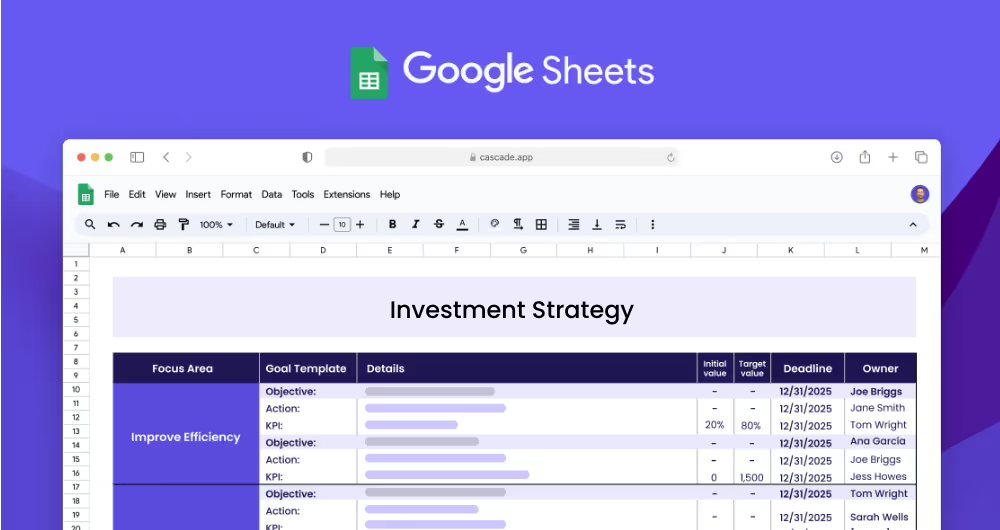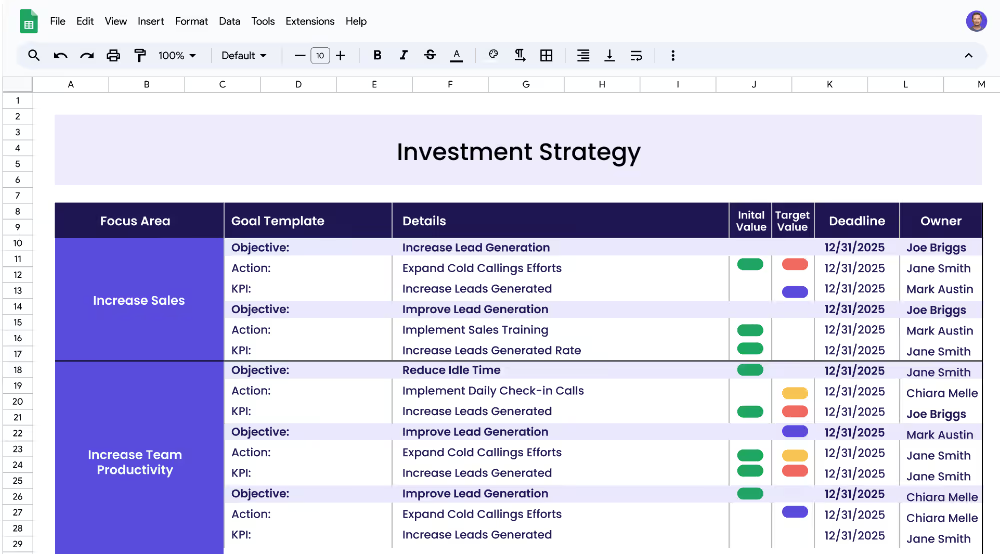An investment strategy is a plan that outlines how to approach investments in order to achieve a particular goal. It should include an analysis of the current market conditions and the potential for future investments, as well as an understanding of the investor’s risk tolerance and return expectations. The goal may be long-term capital appreciation, income generation, or a combination of both. A sound strategy will guide the investor’s decision-making process, helping to minimize risk and maximize returns.
Each focus area has its own objectives, projects, and KPIs to ensure that the strategy is comprehensive and effective.
The Investment Strategy template is designed to help finance teams develop strategies to make smart and profitable investment decisions. It is suitable for any organization or individual who wants to create a comprehensive investment plan that outlines its objectives, actions, and KPIs. Whether you are a financial advisor, an individual investor, or a member of a larger team, this template can help you create an effective strategy that will yield results.
Focus areas refer to the overall goals that you would like to achieve with your investment strategy. Examples of focus areas could include increasing returns, reducing risk, or diversifying your portfolio. It is important to define your focus areas clearly so that your strategy can be tailored accordingly.
Objectives are the specific goals that you would like to achieve within each focus area. For example, if your focus area is increasing returns, your objectives might include researching investment opportunities and increasing the average return rate. It is important to think carefully about the objectives that are relevant to your focus areas.
KPIs, or Key Performance Indicators, are measurable targets that you can use to track the progress of your objectives. For example, if your objective is to reduce the total risk exposure, you could set a KPI of decreasing the risk exposure by a certain percentage. This will help you track your progress towards your objective.
Projects are the actions that you will take in order to achieve your KPIs. For example, if your KPI is to decrease the total risk exposure, you might implement projects such as monitoring investments and researching new opportunities. It is important to be clear about the projects that you will undertake in order to achieve your desired results.
If you’re ready to accelerate your strategy and see faster results, Cascade Strategy Execution Software provides a seamless platform that makes planning, tracking, and executing your investment strategy straightforward and impactful. Move beyond the limitations of spreadsheets with Cascade's real-time updates, centralized collaboration, and automated reporting to ensure you can focus on maximizing returns while minimizing risks. Sign-up for free or book a demo with one of our strategy experts today!


